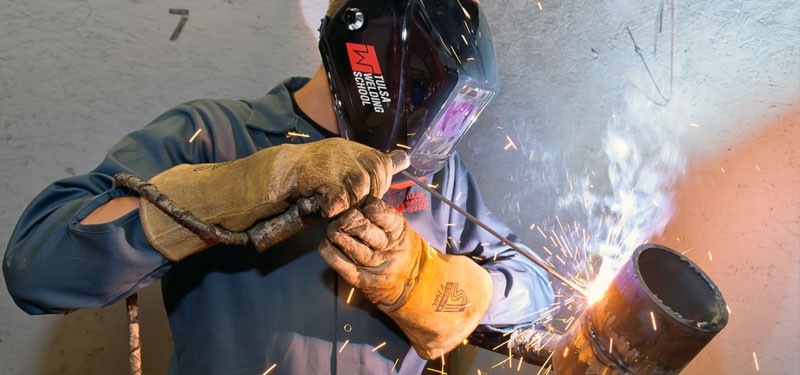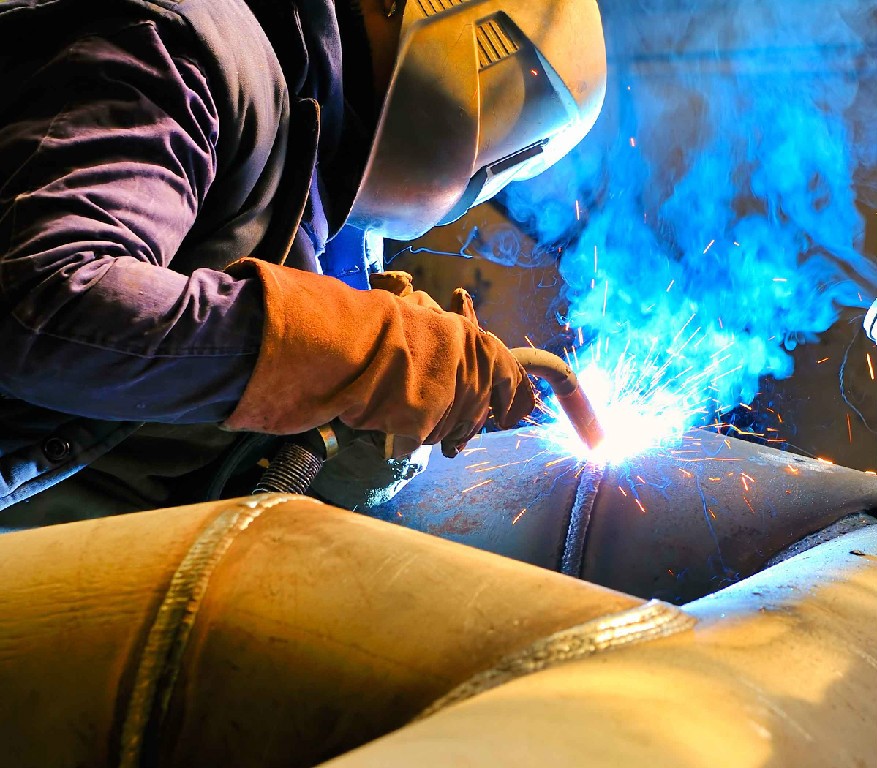“My childhood was really nice. My parents never forced me to do anything; it was always, “If you want to do that, fine.” When I told my father I was going to be an actor, he said, “Fine, but study welding just in case.”
-Robin Willians
Well, the lines mentioned above are sufficient enough to make you realize the worth of a welder in life. Some started learning it as a hobby, and while others started it to earn the bread. But from our point of view, not every self-taught person can weld and it is not advisable to do so. If you aren’t keen on learning the trade, you should not think of making a career in the same. However, you should know welding is an emerging, exciting, and challenging career option nowadays. Just because the day-to-day need for welding in the industry or the residential projects is never going to end, you will get an ample amount of opportunities.
A welder’s job is to fuse materials together to create something new or to fix broken things by merging them. But, you should know that fusing without knowing the measurements and ins & outs of the trade, is not an easy nut to crack. You need to know the maths right and get some training from a welding certification training school to get qualified for working professionally.
The training program teaches you the handling of powerful tools, basic mathematical calculations & measurements, sketches as well as blueprints preparation. A generous amount of experience comes once you get hands-on training in welding. So are you ready to brush up the skills and step your foot in the professional welding field?
About the profession:
Before embarking on this beautiful journey, you should know that this craftsmanship job treats everyone alike: males and females. It is a dynamic field and involves some scientific principles implementation. Since, no field starting from construction, industrial fittings to car manufacturing would be able to function without fusing materials together, the opportunities for welders are in abundance.
Requirements to be welder:

The job profile demands you to be fit physically as well as mentally. You need to have hand-eye coordination and perform work with ultimate perfection. You need to be self-motivated first and then get into the profession. You need to get the basics clear to develop the skills and gain recognition in the industry. If you master the trade, you can start freelancing or get a job in a well-known organization.
Types of welding to learn:
You can enrol yourself at an expert welding training school to get trained over various types of welding used in the industry. They also teach the soft skills that are necessary to have proper communication with the client. You get both theoretical, practical, and technical knowledge about welding. Some of the different types of welding are:
Shielded metal arc welding:
This type of welding is also known as Stick welding predominantly used in construction and home projects. It is easy to learn & use and also very cost-effective.
Metal Inert Gas welding:
Also known as MIG welding, this welding is generally used to forge steel, stainless steel, and aluminium. It is highly used in the automation industry, shipyards, and other residential projects.
Tungsten Inert Gas welding:
This welding type is slow and time-consuming because it requires metals to be in their pure form. The end result is a high-quality weld, but if you master this trade, the job opportunities are endless.
Few other types of learning imparted by the training schools are:
Advanced Math:
Since welding requires some technical knowledge, it is important to learn the advanced Math. The prospect welder should know and understand the fraction logic, decimals, geometry, and trigonometry. They will get to know how to measure angles, cut pipes, and fuse them at the required angle. You also get to learn what different types of metals exist and how differently you need to approach each of them while welding.
Industry-related soft skills:
The workplace is more than just welding and welders. You need to learn how to work independently and deal with other departments at the same time. Such training is given during the certification program, and the program also makes you learn how to encounter the problems and solve them effortlessly.
Employment Opportunities:

Do you wonder where exactly you can work? Here is your answer.
You can start your career as a professional welder who fuses metals together. If you are good at it, you will get job offers from the manufacturing industry of cars, ships, heavy instruments, and machinery. However, training is required before you enter the profession.
As you grow and expertise the field, you are qualified to become a welding engineer, who manages the project and strategise the plan. Once you achieve that position, you will need to have experience in thermit(CAD) welding.
Going further, with years of experience, you can rise up to the next level and become a welding instructor. However, you need to qualify yourself first with the exam, and the position doesn’t come with just the number of years of experience you have in the field. You need to get certified from a welding certification training school, as you are going to teach the other welders. Isn’t it a high responsibility on your shoulders?
Heading forward, the next position is evaluating and inspecting the other welders, which means being a welding inspector. If you grab that position, it would be your responsibility to check that the work done by the other welders in the industry meets the quality benchmarks set by the government of the state. This being said, you would also be training the new welders and make them qualified to pass the certification test.
Are you ready to try your hands on welding and explore career opportunities? If yes, start preparing yourself today.
